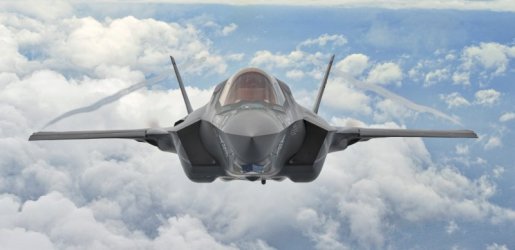One of the more controversial military development projects of the recent past is the F35, Lockheed Martin’s newest fighter aircraft. While the project has been ongoing since the 1980s, the F35 is still having some major teething problems, drawing criticism for the ever-growing costs of the program.
Originally, the idea behind the F35 came out of the 1980s, when several NATO countries came together to seek a Joint Strike Fighter or JSF. The JSF program sought, ideally, to make a single airframe that could be configured or ordered to accomplish missions ranging from carrier-based operations to air to ground and air to air missions. Some variants were to include vertical takeoff and landing as a means to extend the operational capabilities of the craft.
Lockheed Martin’s entry into the program is the F35. The aircraft comes in four variants, with several more proposes, which conceptually meet the ideals of the JSF program. We have to say ideal since there have been some growing pains with the program.
Despite having flown first in 2006, the aircraft has underperformed in terms of its reliability and has seen soaring maintenance costs. As of current updates, the US Department of Defense plans to spend 1.7 trillion dollars on getting and maintaining 2,500 F35s.
This has caused no small amount of criticism on several levels. First is just how slow the program is moving: the idea is from the 80s, the plane has been in testing since the early 2000s, and, as of yet, only about a tenth of the promised procurement has been met. This means that, for a large sum of money, it can certainly look like the F35 is expensive for relatively few aircraft being in operation. And we have to be careful about what we mean by “in operation”- considering that the F35 has such frequent breakdowns.
Another source of critique is the lack of capability of the fighters. Since the JSF concept is supposed to be a jack of all trades, it does end up being a master of none. For example, some folks find the older, cheaper, and much more reliable A10 Warthog to be a superior-close air support aircraft.
And, for the price tag, some think that the F35 should make a decent fighter. This, too, has come under criticism: the F35 is significantly slower than the F22 it is going to replace, and, vitally, similarly slow when compared to the Mig 29, Russia’s air superiority fighter. The F35s chances as a dogfighter, then are not great.
But, all of those critiques aside, the US seems willing to keep funding the project. Whether or not the F35 lives up to its performance promises from nearly two decades ago, it looks like it will be in US inventory for years to come, even as airframes that are much older and less advanced are seeing action where the F35 was supposed to replace them. Time will tell, but the F35, in my view, is an exercise spending for its own sake, with the mission taking a back seat.
Originally, the idea behind the F35 came out of the 1980s, when several NATO countries came together to seek a Joint Strike Fighter or JSF. The JSF program sought, ideally, to make a single airframe that could be configured or ordered to accomplish missions ranging from carrier-based operations to air to ground and air to air missions. Some variants were to include vertical takeoff and landing as a means to extend the operational capabilities of the craft.
Lockheed Martin’s entry into the program is the F35. The aircraft comes in four variants, with several more proposes, which conceptually meet the ideals of the JSF program. We have to say ideal since there have been some growing pains with the program.
Despite having flown first in 2006, the aircraft has underperformed in terms of its reliability and has seen soaring maintenance costs. As of current updates, the US Department of Defense plans to spend 1.7 trillion dollars on getting and maintaining 2,500 F35s.
This has caused no small amount of criticism on several levels. First is just how slow the program is moving: the idea is from the 80s, the plane has been in testing since the early 2000s, and, as of yet, only about a tenth of the promised procurement has been met. This means that, for a large sum of money, it can certainly look like the F35 is expensive for relatively few aircraft being in operation. And we have to be careful about what we mean by “in operation”- considering that the F35 has such frequent breakdowns.
Another source of critique is the lack of capability of the fighters. Since the JSF concept is supposed to be a jack of all trades, it does end up being a master of none. For example, some folks find the older, cheaper, and much more reliable A10 Warthog to be a superior-close air support aircraft.
And, for the price tag, some think that the F35 should make a decent fighter. This, too, has come under criticism: the F35 is significantly slower than the F22 it is going to replace, and, vitally, similarly slow when compared to the Mig 29, Russia’s air superiority fighter. The F35s chances as a dogfighter, then are not great.
But, all of those critiques aside, the US seems willing to keep funding the project. Whether or not the F35 lives up to its performance promises from nearly two decades ago, it looks like it will be in US inventory for years to come, even as airframes that are much older and less advanced are seeing action where the F35 was supposed to replace them. Time will tell, but the F35, in my view, is an exercise spending for its own sake, with the mission taking a back seat.

